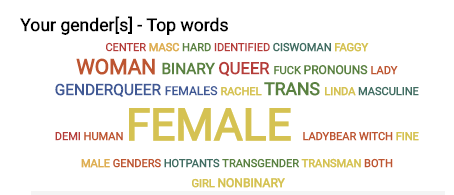Teaching people personal finance means getting intersectional and granular really, really quickly. For every constant (an interest rate), there’s a variable (do I pay debt or save given my specific situation?).
There’s best practices (pay the debt first!), and there’s always exceptions: these exceptions often relate back to your class. Class is a background noise you need to tune into to make sharp decisions.
Folks who have taken classes or coaching with me know I have you fill out an intake form, and I’ve started getting some of the insights out of these.
For starts, I’m unpacking the distribution of class across people I work with, specifically how people experience class now as compared to their experience growing up.
The numbers:

*The teal that’s not popped out is upper class/wealthy. I’ll make better charts later I promise!
Class mobility: downwards and sideways
- More than twice as many people identify as working class as adults than those who did as young people.
- Middle/Upper middle class in the present is only 23% of what it was as a young person.
- About the same number of people say they were and are poor, and poor/working class (though is it the same people? not necessarily!)
- A few more of you are middle class now, and twice as many of you are lower middle class now.
Insights:
Why the downward grade in class? Given the conversations I have with you all, here’s my takeaways:
- Age: Since most people I work with tend to be in the 25-45 age bracket, with the highest distribution in the 27-36 decade, I’m going to notice age / time of life as a factor — early on in developing our careers, we’ve not had a chance to “get” middle class (yet?)
- Loans & Debt: You don’t need me to tell you how much damn student debt we collectively have — you all tell me how it impacts you. One in six from my sample mentioned debt as the #1 priority. Aside from starting out in life, many of you are starting with a load of debt our parent’s didn’t have. That means we’re prohibited from saving and accumulating as they did, hard stop.
 Gender: the majority of people I work with are cisgender women and secondarily are gender nonconforming folks. Given that April 4 was Equal Pay Day, and women categorically still make ~20% less than men, without even accounting for race, ethnicity and ability [check out this report that does].
Gender: the majority of people I work with are cisgender women and secondarily are gender nonconforming folks. Given that April 4 was Equal Pay Day, and women categorically still make ~20% less than men, without even accounting for race, ethnicity and ability [check out this report that does].- Work & lifestyle: I don’t collect data on work specifically, but I can easily report from memory that you are not stockbrokers, dentists, or bankers. You are mostly therapists, wellness instructors, small-business owners, artists*, social workers, nonprofit workers, project managers & c — with a few high-powered tech and knowledge workers in the mix. Categorically this first set are not high-salary careers in the first years, though many of you have set yourselves up with private practices and graduate degrees which will tend towards earning potential as time goes on.
The framework:
I’m guided by the smart work that Betsy Leondar-Wright did to create the Activist Class Culture’s Class Path framework, which breaks out class into at least two times: when you were 12, and now. I love this because it bakes in the idea that our current experiences are informed by the past.

What about you?
I’m curious where you fit into this? What’s your class path? Do you see yourself reflected in any of the underlying stories here?
Next, I’ll report on some of the problems you’re most interested in solving, and the background privileges and marginalizations that get in the mix.
*Some of the most interesting research on salary data for artists comes from the folks at BFAMFAPHD, check it out.